Koneswaram Temple
Hindu Temple
Koneswaram Temple or Tirukoneswaram Kovil is situated on top of Swami Rock. This temple is dedicated to the Hindu God Shiva, and it is one out of five such temples situated around Sri Lanka. It is believed that this Kovil has been in existence since 2500 years ago, and was renovated by the South Indian Chola King Kulakottan and maintained by other Sinhala Buddhist Kings. In 1622, the Portuguese destroyed this temple which they referred to as the temple of a thousand columns by shoving the temple over the edge of the cliff into the deep blue seas below. The revered Shiva lingam (mark of Shiva) was subsequently rescued by divers. The Portuguese used the building materials of the temple in the construction of Fort Fredrick.
At the bottom of the hill which leads to Swami rock is in an ancient stone inscription with the symbol of King Kulakottan – the dual fish. The prophecy states that after 1500 years, Westerners with different eye colours will rule the country for 500 years. At the temple you can take part in the evening or morning pooja (prayer service) or obtain a blessing from the swami (priest) at the kovil. The temple is also worthwhile visiting for its gorgeous views of the natural harbour as well as the Indian Ocean.
Koneswaram Temple: The ‘Mount Kailash of the South
Discover the Koneswaram Temple (Thirukonamalai Konesar Temple), a breathtakingly ancient Hindu shrine perched dramatically atop Swami Rock in Trincomalee, on Sri Lanka’s East Coast. Heralded as the “Temple of a Thousand Pillars” and the ‘Dakshina Kailasam’ (Mount Kailash of the South), this sacred complex offers a unique blend of profound spiritual heritage, riveting history, and unparalleled panoramic views of the Indian Ocean.
The Heart of Hindu Sri Lanka
Koneswaram is one of the five ancient Pancha Ishwarams (abodes of Shiva) in Sri Lanka, making it one of the most significant Hindu pilgrimage sites in the entire country, dedicated to Lord Shiva (in the form of Kona-Ishvara).
- Ancient Lineage: The temple’s origins are steeped in antiquity, with some records suggesting roots as far back as 1580 BC or 400 BC. It flourished for millennia, patronized by kings of the Anuradhapura, Chola, Pandyan, and Jaffna kingdoms.
- Myth and Legend: The temple features heavily in Hindu epics. Legend states that the demon king Ravana and his mother were devout worshippers of Shiva here. The famous cliff face known as “Ravana’s Cleft” is said to have been split by Ravana’s sword during an attempt to uproot the temple for his ailing mother.
- Geographical Significance: The site is often called the ‘Dakshina Kailasam’ because it lies on exactly the same longitude as Mount Kailash in Tibet, the primary abode of Lord Shiva.
Location and Experience
The temple is located at the furthest tip of the Fort Frederick promontory in Trincomalee. The journey to the temple itself is part of the experience, as you pass through the colonial-era fort walls before arriving at the sacred cliff.
- Swami Rock: The temple sits on a high rocky outcrop that plunges 400 feet (120 meters) into the deep blue sea of the Bay of Bengal, offering majestic coastal views.
- Key Sights: Look for the magnificent Golden Statue of Lord Shiva overlooking the ocean and the ancient Svayambu Lingam (a natural sacred power stone) housed in the main shrine.
- Lover’s Leap: Nearby, on the edge of the promontory, is a cliff known as Lover’s Leap, named after a tragic legend involving a Dutch officer’s daughter.
History of Destruction and Resilience
The temple’s grand history is marred by a catastrophic period during the colonial era:
- The Temple of a Thousand Pillars: The original temple complex, built in the classical Dravidian style, was renowned for its massive structures, including the “Aayiram Kaal Mandapam” (Thousand-Pillared Hall), and was considered one of the greatest buildings of its age.
- Portuguese Conquest: In April 1622, the Portuguese colonial forces completely destroyed the temple complex, using the demolished black granite debris to construct the surrounding Fort Frederick. Priests desperately buried some of the most sacred idols, while much of the monumental architecture was pushed over the cliff into the sea.
- Restoration: The temple was eventually rebuilt and restored in the 1950s following Sri Lankan independence. Excavations led by archaeologists and marine explorer Arthur C. Clarke in the 1960s recovered numerous submerged artifacts and Chola bronzes from the ocean floor, which are now enshrined in the reconstructed temple complex.
📝 Visitor Information
| Detail | Information |
| Location | Swami Rock, Fort Frederick, Trincomalee, Eastern Province |
| Main Deity | Lord Shiva (Konanātha Swami) |
| Dress Code | Modest attire required. Shoulders and knees must be covered. Footwear must be removed before entering the inner premises. |
| Best Time to Visit | Early morning (6:00 AM) or late afternoon to avoid the heat and attend poojas (prayer services). |
| Entry Fee | Generally, there is no entrance fee to the temple complex itself. |
Experience the spiritual power and historical gravity of this majestic coastal shrine!
Local Hotels

Unsure Where To Start?
Let’s talk about your Earth Trip


Our travel specialists are seasoned explorers with deep local insights. Whether it’s uncovering hidden gems or planning immersive cultural experiences, we design trips that go beyond the ordinary. Get in touch today!
Request A Video MeetingOther Popular Experiences










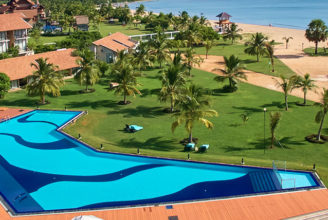

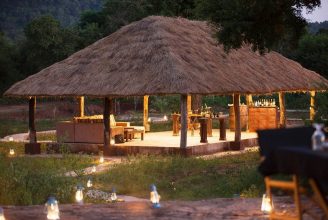
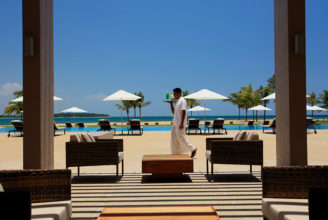




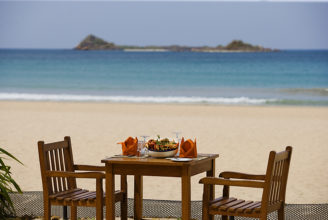
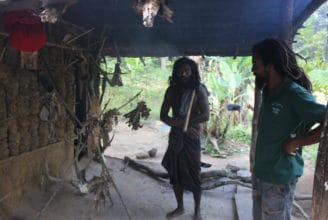
 Koneswaram Temple
Koneswaram Temple